Ideas for “Living Safely in Place” That You’ll Need to Know
 18 October 2017
18 October 2017 
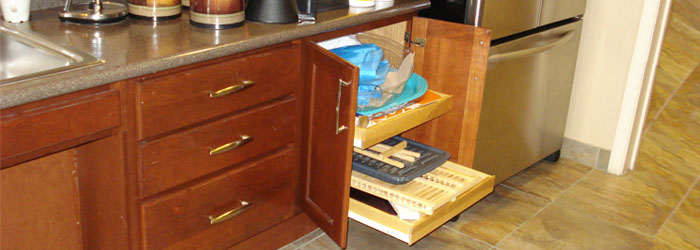
Are You a Baby Boomer Worried About Your Future?
In less than 20 years, the U.S. population of those 65 and over is expected to double. A recent Harvard study claims that almost a third of American households will soon be headed by someone age 65 or older.
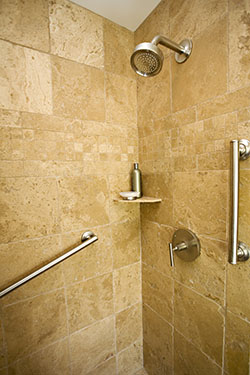
What does that mean to you and your family? Will you or close relatives be able to stay in the family home? At Rosie on the House, many younger families call us to talk about adding on to homes so that Mom or Dad can move in with them. Older homeowners are also interested in improving the safety and accessibility of their own houses.
Staying in your present house – what many call "aging in place" – is a growing trend in remodels. As time passes, we've begun advising parents and children about what we prefer to call "living in place – home safety for the whole family." We want solutions for how Mom and Dad can stay where they are or how families can comfortably live under the same roof.
Recently, we toured the Family Caregiver House in Phoenix on the campus of Foundation for Senior Living (FSL), a branch of Catholic Charities. Katie Martin, program director with the group, talked about all the features and equipment that can allow parents to live either independently or with a caregiver. Essentially, the home features principles of universal design – that's a common term used to describe a house made accessible to all ages as well as those with disabilities. Many ideas can also work well with children or younger adults injured in accidents or coping with illness.
Among what we saw used at the caregiver house are changes that might work in your own home without giving your house an institutional look. If you're interested in making similar changes, these suggestions might be a place to start. Many businesses, designers and organizations can provide help.
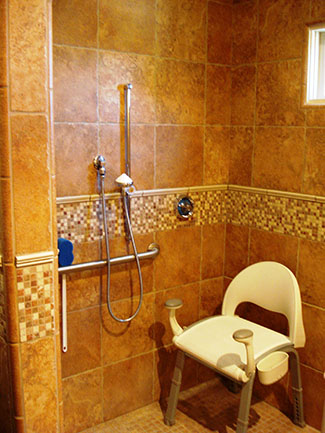
In the Bathroom
Changes in bathrooms are becoming especially popular. In fact, the National Kitchen and Bath Association named universal design as No. 1 among its top 10 bathroom trends a year ago. Where possible, we give estimated prices.
Grab bars | These are safety devices that should be added in everyone's bathroom, regardless of the age of family members. After all, a bathroom is a room loaded with slippery and very hard surfaces that can lead to accidents. Install them near toilets, around showers and bathtubs. Today's grab bars can blend with the style of your faucets and hardware. Be sure that they are fastened into studs or concrete blocks behind walls. If that's not possible, you can use butterfly toggle screws.
A grab bar can also be anchored from the floor to the ceiling like a pole. Cost of each designer grab bar might be $50 to $75. Installation might cost $100 or more.
Roll-in, no-threshold showers | For easier access, these showers have no doors at all and no curbs to step over. The drain for the water is built around the edges of the shower area. Instead of building a bench into an existing shower, use a sturdy portable shower chair. A longer than usual cord will be needed for the pull-down shower spray head. Installing a new shower could cost $8,000 to $13,000. A no-curb shower could also mean replacing the entire bathroom floor.
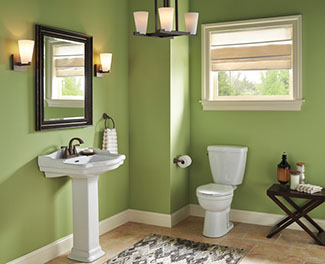
Taller toilets | These widely available "comfort height toilets" are 17 to 19 inches high compared to the standard 15 inches. Hands-free, self-cleaning toilets will help seniors maintain independence and dignity. Cost of a toilet and installation will be similar to that for standard toilets: maybe $300 to $1,000 or more.
Bathtubs | A special doorway can be cut into an existing bathtub so that the area can be used as a shower. After the bather enters the tub, a barrier is put over the "door" and the bather sits in a shower chair. Cost: $500 on up. Another possibility is replacing an existing tub with a walk-in tub. The cost: $4,000 to $7,000 or more, depending on features that may be added to the tub.
In the Kitchen
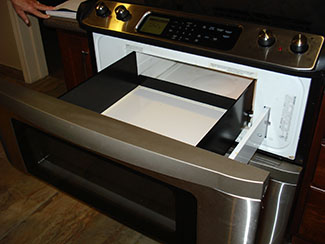
The cost of changes in the kitchen are more difficult to estimate and will depend on how much of the kitchen is replaced.
Slightly shorter cabinets with a taller toe kick | These changes make it easier for someone in a wheelchair or walker to use the kitchen. A change like this might mean installing brand new cabinets.
A microwave that pulls out like a drawer under the range | This makes the microwave easier to use because a user doesn't have to reach up and over his or her head. Microwaves are generally more popular than regular ovens among older Americans. $1,200 to $1,300.

The dishwasher | This appliance should be built in on a platform so it is taller than usual; some dishwashers can be operated as a drawer. Cost: $1,000 to $1,200 for a two-drawer model. Using a drawer is not as hard as reaching down into the bottom of a standard dishwasher.
Pullout drawers in cabinets | These can eliminate the need to rummage around the backs of cabinets to find what you want.
Shallower sinks | These sinks make it easier to wash dishes if you're in a wheelchair. Shallow sinks are less expensive than regular deeper sinks, but may be harder to install.
General Improvements
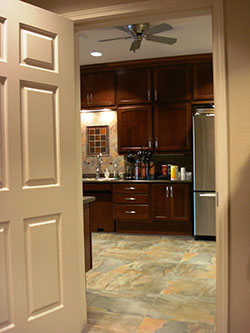
Smooth flooring | You want non-slick surfaces with no bumps or tile edges that can become hazardous. Avoid using throw rugs. A good choice might be luxury vinyl flooring. Cost: $2 to $3 a square foot or more, depending on materials used and how much flooring is replaced.
Wider doorways | Doorways need to be 36 inches wide to easily accommodate wheelchairs and walkers. Widening one doorway will cost from $1,500 to $1,800. You may need to do more than one in your home.
Recliner chairs | A recliner can be purchased with a seating area that moves up and down so the user has help in getting in and out of the chair. Cost: $500 to $1,500 depending on what you want the chair to do.
###
Photo Credits:
RELATED CONTENT:
- Blog: Can You Afford To Make Room For Mom And Dad?
- Blog: Seven Secrets To Speed Up Your Remodel
- Blog: How To Get Interior Design On A Budget
- DIY FAQ: How Do I Make Room For The Grandparents?
- Podcast: Tiny Homes and Air Conditioning Innovations
Print this page
recent post
- Duck, Duck, Duct! How Often Should Ductwork Be Cleaned?
- Vinyl vs. Fiberglass Windows: Which Is The Better Choice Of Replacement Window?
- We May Be The Grand Canyon State, But The Rocky Mountains Are Important For Arizona
- Welcome to Arizona! Things A Newbie to Arizona Should Know
- The Pros & Cons of Buying A Flipped House
- Getting In On The Ground Floor
- Why It’s More Critical Than Ever To Get Your AC Serviced Before Summer
- The Reality of Remodeling
- What To Look For When Comparing Your Roofing Quotes
- What To Expect When Buying New Windows & Doors
